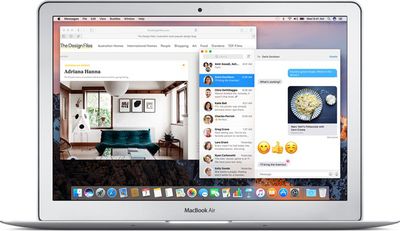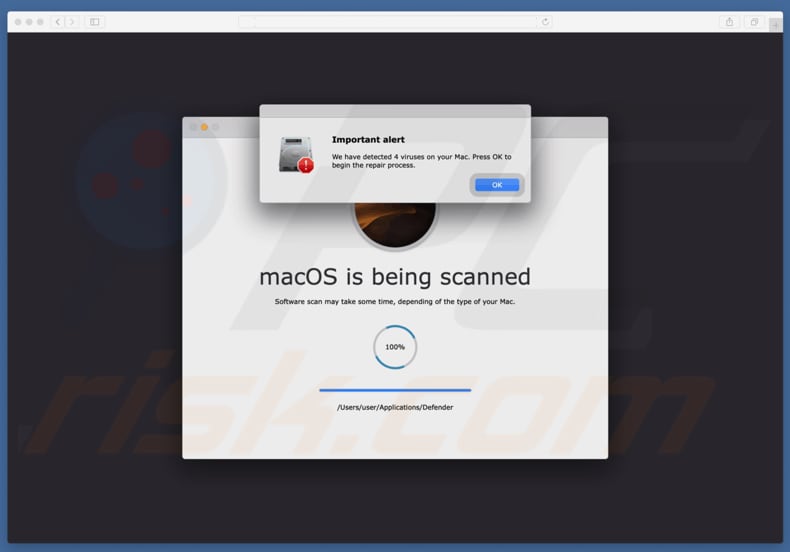

- #Mac infected with malware yesterday how to
- #Mac infected with malware yesterday mac os x
- #Mac infected with malware yesterday install
- #Mac infected with malware yesterday update
If you want to find it without digging, just do a Spotlight search for “Terminal.” They don’t seem to be asking for any personal information of any kind,” he wrote.Īlternately, you can run a trio of commands in Terminal, a piece of software you’ll find in the Utilities folder in your Mac’s Applications folder. And that’s all they are asking the user to supply to do a simple look-up.

Web already has a list of UUIDs, particularly of those who are infected. Jeremiah Grossman, Chief Technology Officer at White Hat Security, told CNET via e-mail that in normal situations, it’s not a good idea to share your Mac’s unique hardware identifier, but in this case it’s safe. If it doesn’t find your machine, you’re in the clear. It cross-checks your Mac’s unique hardware with its own database of machines that have been compromised. Right now the easiest way to tell if your computer has been infected is to go to Dr. Apple has stopped supplying software updates for these operating systems.
#Mac infected with malware yesterday mac os x
Of note, the Java security fixes are only available on Mac OS X 10.6.8 and later, so if you’re running OS X 10.5 or earlier, you will still be vulnerable.
#Mac infected with malware yesterday update
Apple closed off the malware’s main entry point with a Java update on April 3. Since Flashback’s launch, the security tool has been updated - two times now - to identify and protect against a handful of Flashback variants.Ī more recent version of the malware, however, got around XProtect by executing its files through Java. Apple didn’t get around to fixing its own Java version until last week.Īpple has its own malware scanner built into OS X called XProtect. As it turns out, the malware writers exploited one particular vulnerability that Oracle patched in February. Instead of simply using Java’s current public release, the company creates and maintains its own versions. What also didn’t help is the way that Apple deals with Java.
#Mac infected with malware yesterday install
In its newer Java-related variants, the software could install itself without the user having to click on anything or provide it with a password. It didn’t help that Apple hasn’t shipped Flash on its computers for well over a year, arguably creating a pool of users more likely to run the installer in order to view popular Web sites that run on Flash.

In its initial incarnation, the malware looked very similar to Adobe’s Flash installer. The simple answer is that the software was designed to do exactly that.

More advanced versions would install quietly in the background with no password needed. The malware evolved to target the Java runtime on OS X, where users visiting malicious sites would then be prompted to install it on their machine in order to view Web content. In its most recent incarnations, the software can install itself without user interaction.Īn earlier version of the Flashback Trojan’s installer.įlashback as we know it now appeared near the end of September last year, pretending to be an installer for Adobe’s Flash, a widely used plug-in for streaming video and interactive applications that Apple no longer ships on its computers. At that point, the software installs code designed to gather personal information and send it back to remote servers. A user typically mistakes it for a legitimate browser plug-in while visiting a malicious Web site.
#Mac infected with malware yesterday how to
So here’s a quick FAQ on the Flashback Trojan, including information on what it is, how to tell if you have it, and steps you can take to get rid of it.įlashback is a form of malware designed to grab passwords and other information from users through their Web browser and other applications such as Skype. Web said that an estimated 600,000 Macs are now infected as a result of users unknowingly installing the software. Nowhere is that clearer than with the Flashback Trojan, a gnarly piece of malware designed to steal personal information by masquerading as very mainstream browser plug-ins. Apple’s Mac platform has long been promoted as safer than the competition, but as Mac sales and market share grow, it’s become a bigger target.


 0 kommentar(er)
0 kommentar(er)
